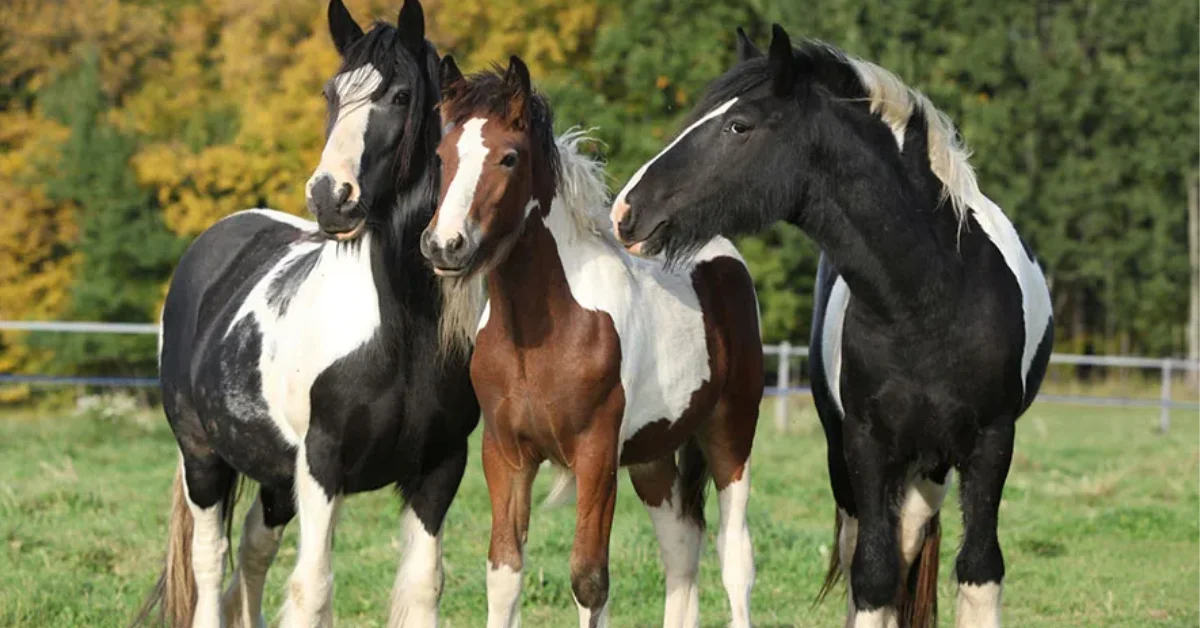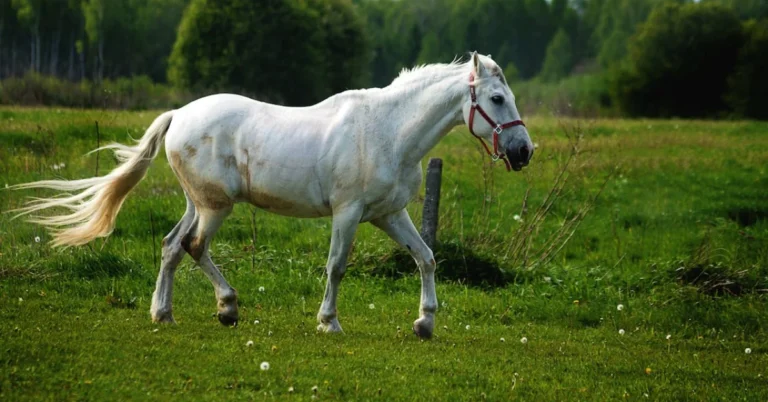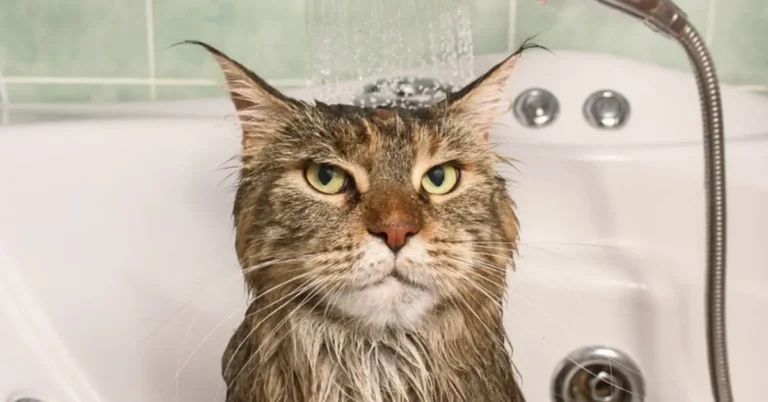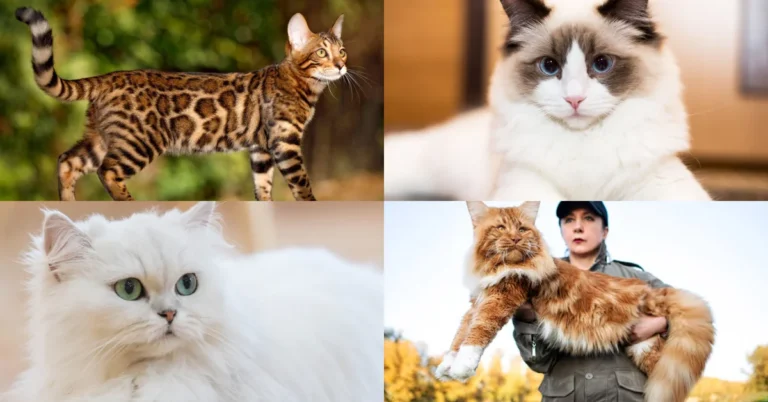For centuries, horses have captured our imaginations, symbolizing freedom, power, and grace. But one aspect of their behavior continues to intrigue us: do horses sleep standing up? The answer, it turns out, is more nuanced than a simple yes or no. Understanding horse sleep requires delving into their unique physiology, evolutionary adaptations, and the delicate balance between comfort and vigilance.
The Myth and the Reality: Sleeping While Standing

While horses possess the remarkable ability to sleep standing up, it’s not their sole slumber mode. Unlike humans, horses cycle through different sleep stages with varying postures. Here’s a breakdown:
Standing Doze: This light sleep state allows grey horses to remain partially alert while resting their muscles. A unique mechanism called the “stay apparatus” engages, locking major leg joints, so they don’t collapse. Standing dozes often involve one leg tucked under the body for additional support.
Deeper Sleep: When needing deeper, restorative sleep, horses sleep lying down. They enter slow-wave sleep, characterized by slower brain activity and muscle relaxation. This deeper sleep is crucial for physical and mental well-being but requires a sense of security, as getting up from a lying position takes longer.
Therefore, horses exhibit both horse sleeping standing up and lying down postures. Their sleep behavior depends on several factors, including:
Environmental Safety: If feeling safe, horses can comfortably enter deeper sleep lying down. In open fields exposed to predators, they might rely more on standing dozes for quicker escape.
Energy Conservation: Standing requires less energy than lying down, making it beneficial for short rests or when conserving energy is crucial.
Individual Preferences: Like humans, individual horses may have preferences for specific sleep postures based on comfort and familiarity.
Unraveling the Physiology of Equestrian Slumber

Horses possess anatomical adaptations that facilitate horse sleeping standing up. The aforementioned “stay apparatus” plays a key role. This network of tendons and ligaments locks knee and hock joints, allowing them to rest without collapsing. Additionally, their strong balance system, honed through grazing on uneven terrain, contributes to their ability to maintain equilibrium while standing still.
However, even during standing dozes, horses aren’t completely “off.” Their senses remain partially alert, allowing them to react quickly to potential threats. This vigilance is key for their survival in the wild, where predators pose a constant danger.
The Power of Rest: Understanding Sleep Requirements

While horse sleeping standing up might seem surprising, it ensures they get adequate rest while staying vigilant in their natural environment. But how much sleep do horses actually need?
Total Sleep Time: Adult horses typically require 3-4 hours of total sleep per day, divided into short bouts throughout the 24-hour cycle.
Balance of Postures: The proportion of horse sleeping standing up and lying down varies. They might engage in multiple short standing dozes throughout the day but dedicate their longer, deeper sleep periods to lying down.
Individual Variations: Just like humans, horses exhibit individual sleep needs based on age, health, and activity level. Younger horses and pregnant mares might require more sleep than adult geldings.
Beyond the Basics: Exploring the Nuances of Horse Sleep
While the previous section provided a foundational understanding of horse sleeping, there’s more to delve into:
The Impact of Domestication: Altered Sleep Patterns?

Horses have evolved over millennia with their primary concern being survival in the wild. Domestication has shifted their environment and needs, raising questions about potential changes in their sleep behavior. Do domesticated horses sleep differently than their wild counterparts?
Studies suggest some differences:
Decreased Standing Sleep: Domesticated horses might utilize horse sleeping standing up less frequently, possibly due to perceived safety in controlled environments.
Longer Lying Down Sleep: They might spend more time in deeper, lying-down sleep due to reduced vigilance needs.
Impact of Management Practices: Stabled horses with restricted movement might exhibit altered sleep patterns compared to those with free access to paddocks.
However, further research is needed to definitively understand the full impact of domestication on horse sleep.
Recognizing Sleep Signs: Observing Your Equine Partner

Understanding your horse’s individual sleep patterns can help ensure their well-being. Here are some signs to watch for:
Standing Doze: One leg tucked under, relaxed head position, occasional ear flicks or eye movements.
Deeper Sleep Lying Down: Body fully relaxed, eyes closed, rhythmic breathing, minimal movement.
Observing these signs can help you create a sleep-conducive environment, minimizing disruptions and ensuring your horse gets the rest they need.
Beyond Sleep: Addressing Potential Issues

While horse sleeping standing up is a natural behavior, certain situations might require intervention:
Excessive Standing Dozes: If your horse relies heavily on standing dozes, it might indicate discomfort or insecurity in their lying-down position. Address any underlying physical issues or environmental stressors.
Difficulty Lying Down: If your horse struggles to lie down, consult a veterinarian to rule out any medical conditions causing stiffness or pain.
Sleep Deprivation: Signs like lethargy, decreased alertness, or behavioral changes might indicate inadequate sleep. Ensure your horse has access to safe, comfortable resting areas and opportunities for both standing dozes and deeper sleep.
By addressing potential sleep issues, you can contribute to your horse’s overall health and well-being.
Exploring the Adaptations of Equine Slumber
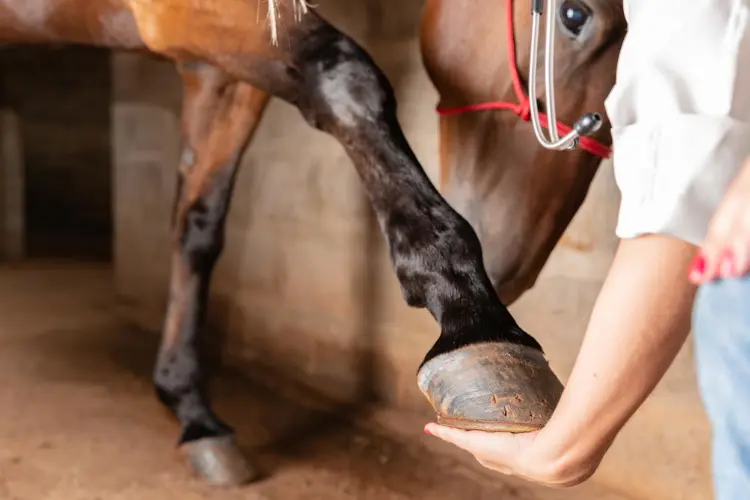
As mentioned earlier, horses possess fascinating adaptations that facilitate their unique sleep behavior. Let’s delve deeper into these anatomical and physiological wonders:
The Stay Apparatus: A Marvel of Evolution
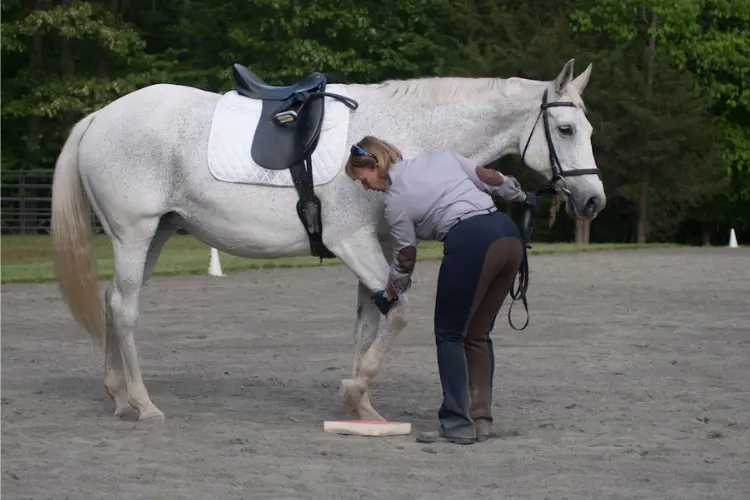
The stay apparatus, a complex network of tendons, ligaments, and muscles, plays a crucial role in horse sleeping standing up. It allows horses to lock their knees and hock joints, effectively serving as a natural “lock” that prevents them from collapsing while dozing.
This system works through a mechanism called the “digitigrade” stance. Unlike humans who stand on the entire foot, horses stand on their “digits” (toes). This stance allows the stay apparatus to engage and lock the joints, supporting their weight without active muscle contraction.
This evolutionary adaptation not only conserves energy but also enables horses to swiftly transition between alert and resting states, a key survival strategy in the wild.
Balance and Stability: A Finely Tuned System
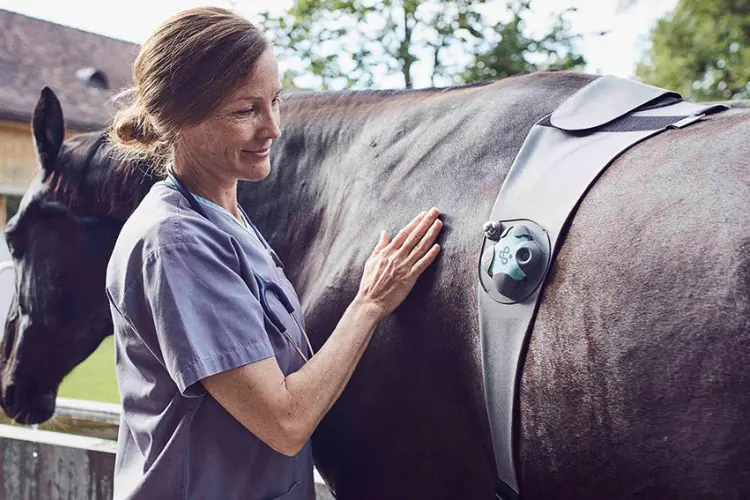
Horses’ ability to maintain equilibrium while standing still is a testament to their finely tuned balance system. This system integrates input from various sensory receptors, including:
Proprioceptors: Specialized nerve endings in muscles, tendons, and joints that provide feedback on body position and movement.
Visual and Vestibular Systems: The eyes and inner ear work together to maintain a sense of spatial orientation and equilibrium.
Tactile Receptors: Sensors in the hooves and legs that detect pressure and ground contact, contributing to balance.
Through these systems, horses can make subtle adjustments to their stance, compensating for shifts in weight distribution and maintaining stability even during light sleep.
The Vigilant Equine: A Multisensory Monitoring System
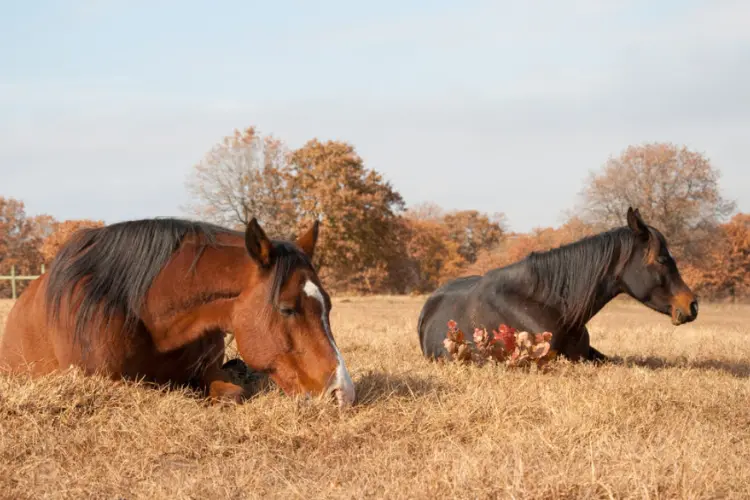
Even during horse sleeping standing up, horses maintain a degree of vigilance. This is a key survival adaptation, allowing them to detect potential threats and react swiftly.
Horses possess a heightened sensory awareness, with:
Acute Hearing: Their large, cup-shaped ears can rotate independently, detecting the faintest sounds in their surroundings.
Wide Field of Vision: With eyes positioned on the sides of their heads, horses have nearly 360-degree vision, minimizing blind spots.
Sensitive Tactile Receptors: Their skin is highly sensitive, enabling them to detect subtle environmental changes and potential threats through touch.
This vigilance allows horses to quickly transition to an alert state if necessary, ensuring their safety and survival in the wild.
The Sleep Cycle: Decoding Equine Slumber
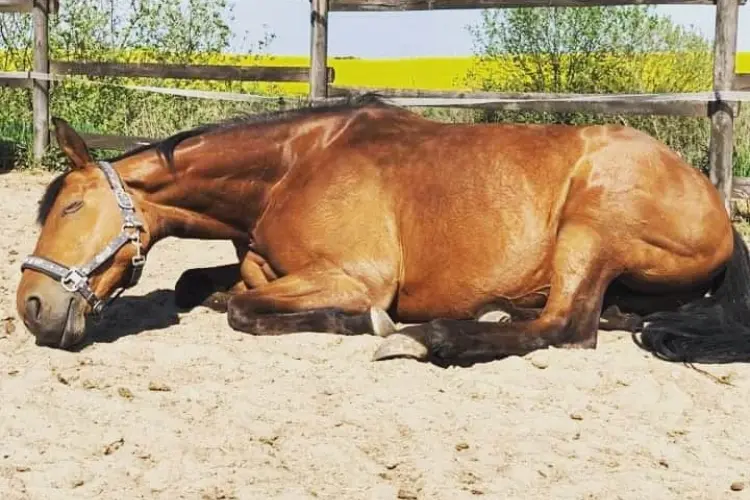
Like humans, horses cycle through different sleep stages, each characterized by distinct brain activity patterns and varying depth of sleep. Understanding these stages can provide valuable insights into their overall sleep requirements and well-being.
Light Sleep (Stage 1): This initial stage of sleep is characterized by a relaxed body posture and a decrease in muscle tone. Horses may exhibit occasional muscle twitches or eye movements during this stage. Light sleep accounts for most of their standing dozes.
Rapid Eye Movement (REM) Sleep: During this stage, horses experience vivid dreams and increased brain activity. Their eyes dart rapidly beneath closed lids, and their muscles are temporarily paralyzed to prevent them from acting out dreams. REM sleep is essential for memory consolidation and emotional processing.
Slow-Wave Sleep (Non-REM): This deep, restorative sleep is crucial for physical and mental well-being. Slow brain waves and reduced muscle activity characterize this stage. Horses must lie down to achieve slow-wave sleep, as their muscles require full relaxation to enter this deep state.
Horses cycle through these stages multiple times throughout the night, with their sleep pattern influenced by factors such as age, health, and environmental conditions.
Sleep and Development: The Role of Slumber in Equine Growth

Sleep plays a vital role in the growth and development of horses, particularly in the early stages of life. Here’s a closer look at how sleep influences equine development:
Foals: Newborn foals spend a significant amount of time sleeping, often up to 20 hours per day. This extended sleep is crucial for brain development, growth, and maturation of the immune system.
Young Horses: As horses mature, their sleep requirements decrease, but sleep remains vital for overall development. Adequate sleep supports the growth of bones, muscles, and organs, as well as cognitive and behavioral development.
Adolescents: During the adolescent stage, horses experience rapid physical and hormonal changes. Sleep helps regulate these changes, supporting healthy growth and development.
Sleep Disturbances: Potential Implications
While horse sleeping standing up is a natural behavior, various factors can disrupt their sleep patterns and potentially impact their well-being. Here are some common sleep disturbances and their potential implications:
Stall Confinement: Horses confined to stalls for extended periods may struggle to achieve deep, restorative sleep. Limited space and lack of comfort can lead to restlessness and fragmented sleep.
Stress and Anxiety: Emotional distress can interfere with a horse’s ability to relax and enter deep sleep stages. Chronic stress can lead to sleep deprivation, which can have detrimental effects on their health and behavior.
Illness or Injury: Physical discomfort or pain can make it challenging for horses to find a comfortable sleeping position, leading to disrupted sleep patterns.
Environmental Disruptions: Loud noises, bright lights, or unfamiliar surroundings can startle horses and interrupt their sleep cycles.
Addressing sleep disturbances promptly is crucial to maintain the overall well-being of horses. Providing a comfortable, stress-free environment, and consulting with veterinarians when necessary can help ensure they get the rest they need.
Final Thoughts
As we’ve explored, the question “do horses sleep standing up” is more complex than it initially appears. Horses possess remarkable adaptations that enable them to balance rest and vigilance, cycling through different sleep stages to meet their unique needs.
From the intricate workings of the stay apparatus to the multisensory monitoring system, every aspect of a horse’s physiology contributes to their fascinating sleep behavior. Understanding these intricacies not only deepens our appreciation for these majestic creatures but also empowers us to provide the best care for their well-being.

